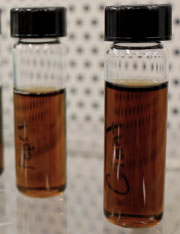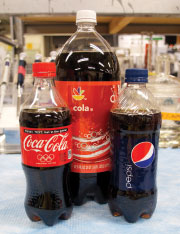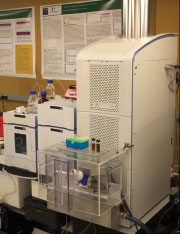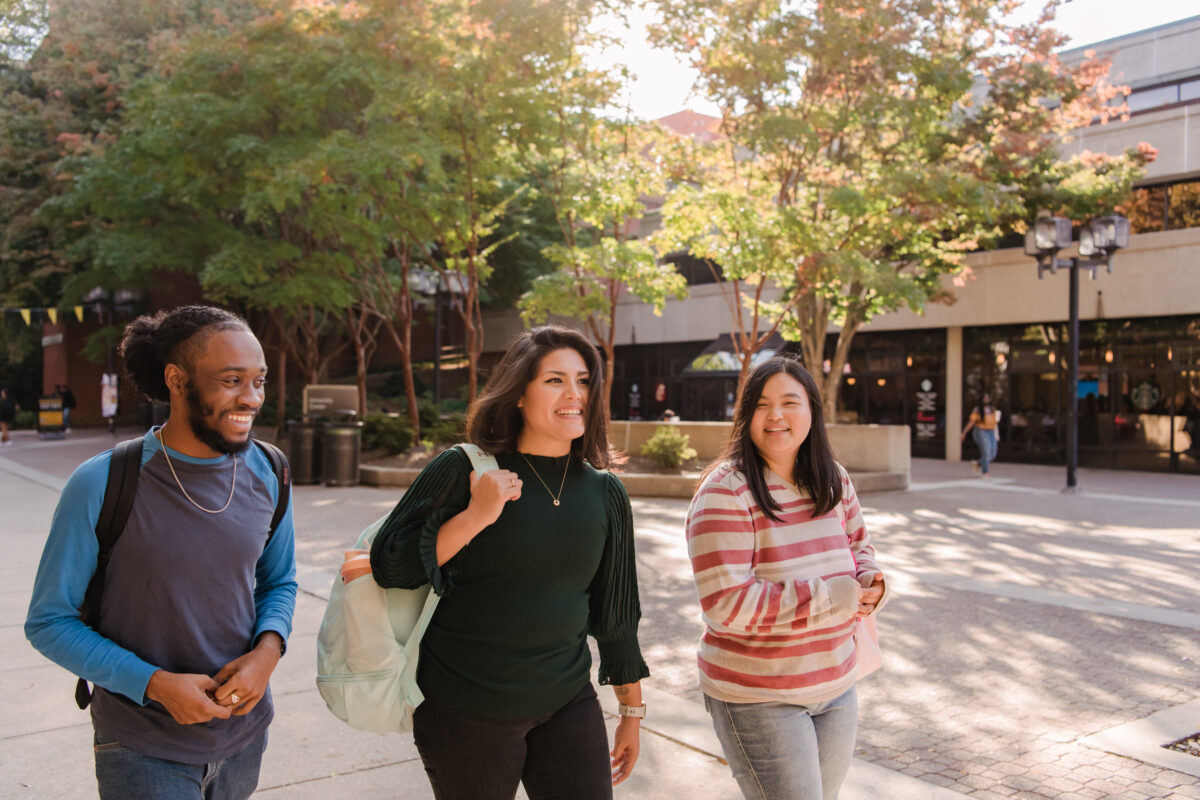 With Josh Wilhide ’10 M.S., Mass Spectrometry Facility Manager
With Josh Wilhide ’10 M.S., Mass Spectrometry Facility Manager
On a hot summer day, there’s nothing quite like the perky fizz of a just-opened soda to keep you cool and caffeinated. As consumers, many of us are incredibly loyal to a particular brand – even to the point of being sommelier-level tasters of sodas.
Many people can tell the difference between Coke and Pepsi blindfolded. But how does the hardworking human taste bud stand up to the massive data-collecting power of one of UMBC’s mass spectrometers?
Josh Wilhide ’10 M.S., chemistry, can quench our thirst for this particular knowledge quite handily. Using one of the mass spectrometers in UMBC’s Molecular Characterization & Analysis Complex (or MCAC), and a bit of basic scientific reasoning, the mysteries of cola will be revealed!
TOOLS OF THE TRADE
- An oh-so-discerning palate
- Cups and paper for secret voting (no cheating!)
- Sample colas: Pepsi, Coke and generic (Giant brand)
- A mass spectrometer, if you can get one. Oh wait, we have seven of them right here at UMBC. 🙂
STEP 1: Know Your Sample
Before you even warm up the spectrometer, it’s important to glean as much base information about your sample as possible. In the case of the colas in our experiment, we can immediately get a sense of flavor, of color, odor, and consistency. From a scientific perspective, it’s all relevant.
“The more information we have to start with, the better chance we are able to give you an answer,” says Wilhide, who handles mass spec requests involving everything from determining the atomic breakdown of soil, to reverse engineering pesticides found on produce.
“A lot of times people will bring in a sample of dirt, but you have to ask [questions about] where the dirt comes from, what you are looking for, what’s the concentration of what you’re looking for …the more we know about the sample, the more we’re able to pre-treat it to put it onto the instrument and get a better, more direct, answer.”
Want to know your cola at a molecular level? You’ve come to the right place.
When using the mass spectrometer, Wilhide first establishes a set of standards. Running tiny volumes –10 microliters to be exact – of each of the three known colas at the start allows the scientists to view a screen detailing the unique peaks and valleys of ingredients that make each product slightly different. Later, when he runs samples of unknown colas through the instrument again, Wilhide can compare the minute differences between knowns and unknowns – and ultimately identify which cola is which.
On the computer screen, with control specimens and unknowns side by side, Wilhide can make sense of the zigzagging green lines that represent masses specific to each soft drink.
“Each cola has a unique fingerprint,” says Wilhide. “Once we put the screen in, we get a pretty instantaneous response from the mass spec. Once you see them together, you can start putting the pieces back together.”
At this point, you’re probably thinking: that’s great, but I don’t have a mass spectrometer of my own to measure my own colas. But, assuming is bad, folks, especially in science.
“Actually, one of the great things about our center is that we do offer training for students and other people [including alumni] who want to learn how to use these instruments on their own,” said Wilhide. “A lot of places won’t let their undergrads near equipment like this, but we’re trying to be a model. It’s a new way of teaching.”
Making this technology accessible to students not only means they can run their own tests and learn along the way – they can also help out with the jobs the MCAC gets from outside clients who are looking for a little scientific detective work of their own. Each day presents a new challenge, a new “fingerprint” in need of uncovering.
“I like taking a mystery and making sense of it,” says Wilhide. “Not to be cliché, but I like the puzzle.”
VIDEO: The Taste Test
Watch as Wilhide and junior biology student Suejane Tan test the colas the old fashioned way (yummy!) and using the MCAC’s shiny new AxION TOF with DSA source both made by PerkinElmer (sciency!). Who will be victorious? Watch the video here.
Interested in learning more about the Molecular Characterization & Analysis Complex (MCAC) at UMBC? Visit it online here.
— Jenny O’Grady








